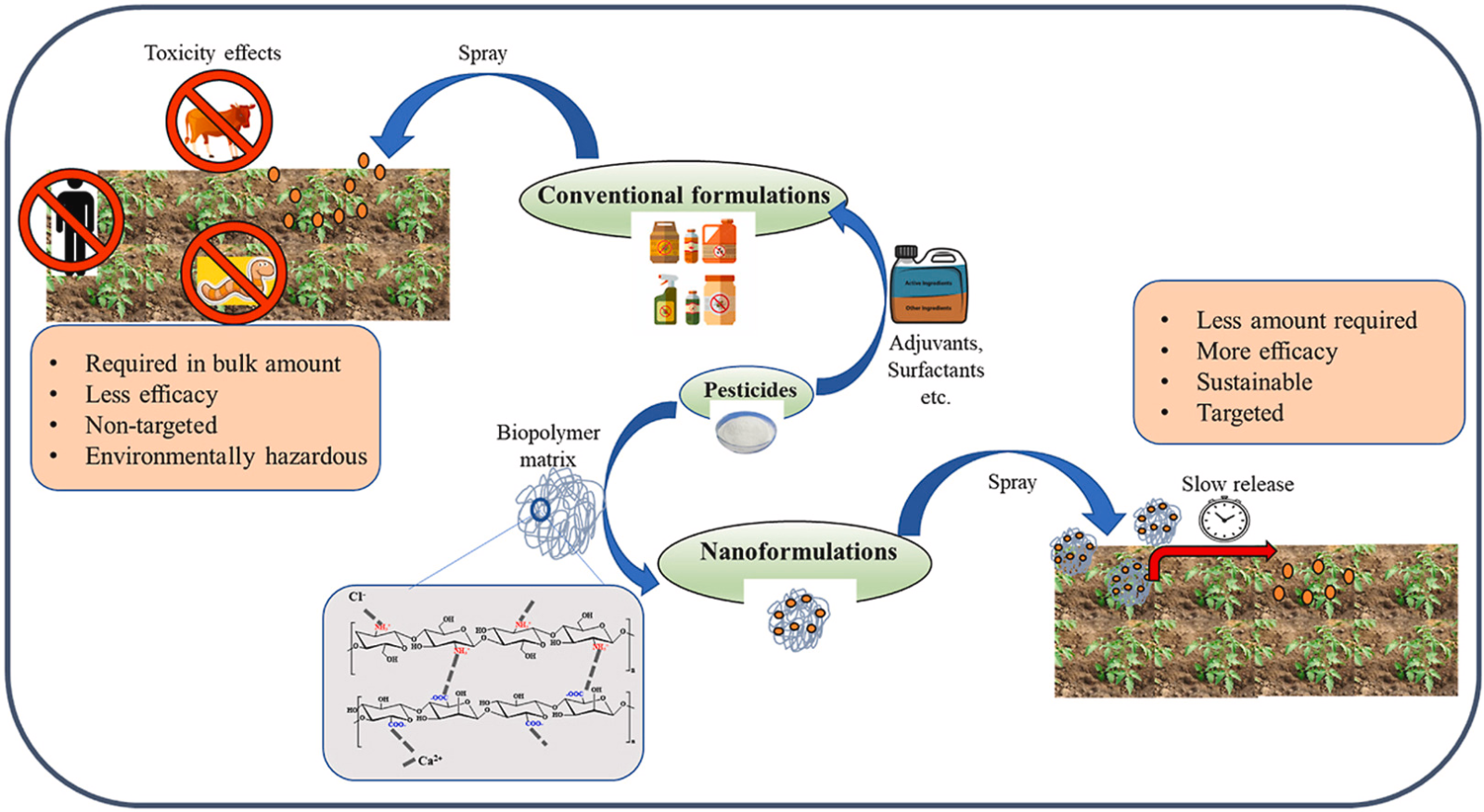July 20, 2023 | Journal of Cleaner Production
In the pursuit of sustainable agriculture and higher crop yields, finding better ways to deal with pests is a top priority. Traditional pesticides have their shortcomings, including environmental harm and health risks. To address these issues, nanotechnology has emerged as a game-changer in agriculture. This review explores recent progress, environmental impacts, and the potential of nano-pesticides, drawing on the collaborative work of researchers from Chaudhary Charan Singh Haryana Agricultural University, All India Institute of Medical Science, India, University of Hohenheim, and Kansas State University.
Nano-pesticides offer a promising alternative to conventional ones. They aim to reduce the excessive use of traditional pesticides while minimizing harm to the environment. Nano-pesticides use tiny particles, called nanomaterials, to enhance the effectiveness and longevity of pesticides. This review looks at various types of nano-pesticides, including those with nanomaterial-based active ingredients, nano-encapsulation, nano-emulsions, and nano-suspensions.
However, introducing nano-pesticides into agriculture raises important questions. We still have much to learn about how they behave in the environment, their impact on ecosystems, and how to regulate their use globally. Researchers are divided on whether nano-pesticides will significantly benefit agriculture or pose new risks. There's also an ongoing debate about how to fit these innovative pesticides into existing regulatory frameworks.
Given these complexities, it's crucial to weigh the pros and cons of nano-pesticides carefully. This review, informed by the collaborative work of a diverse team of experts, provides valuable insights into how nanotechnology could shape the future of pest management in agriculture, making it more sustainable and efficient.
Read more: Are nano-pesticides really meant for cleaner production? An overview on recent developments, benefits, environmental hazards and future prospectives
Graphical Abstract






